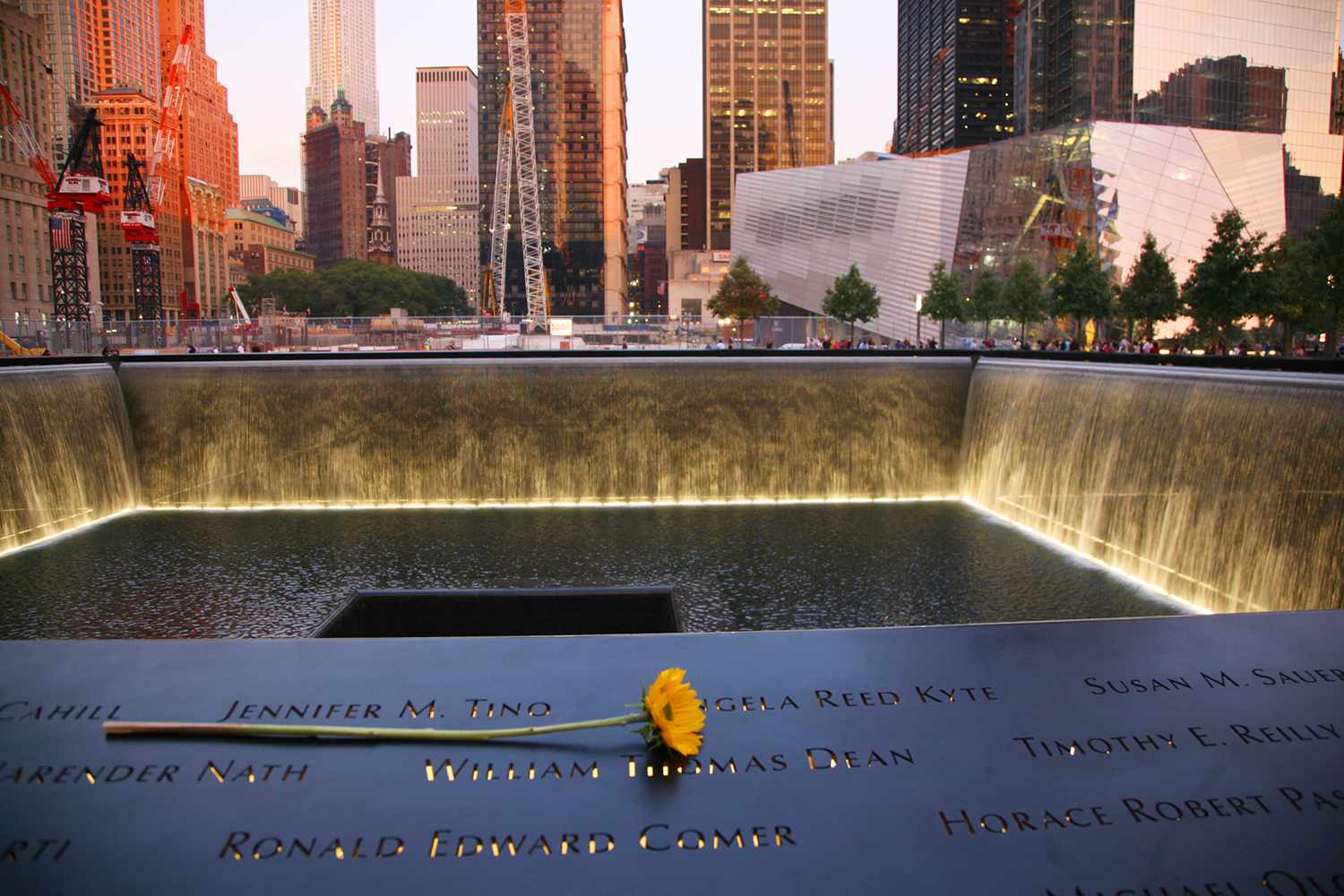postphx.com – The 9/11 Memorial and Museum, located in Lower Manhattan, New York City, stands as a powerful tribute to the nearly 3,000 people who lost their lives in the terrorist attacks of September 11, 2001, and the six who perished in the World Trade Center bombing in 1993. This solemn site, which opened to the public in 2014, is not only a place of remembrance but also an educational institution that aims to honor the victims, survivors, and the countless individuals who risked their lives to save others.
The Memorial
The 9/11 Memorial is composed of two enormous reflecting pools, each nearly an acre in size, set within the footprints of the original Twin Towers. The names of every person who perished in the attacks are inscribed around the edges of the pools, ensuring that their memory is preserved and honored. Water flows continuously into the center of each pool, creating a mesmerizing effect as it cascades down into a central void, symbolizing the absence of those who were lost.
Surrounding the memorial pools are lush gardens and pathways, offering a peaceful sanctuary for reflection and contemplation. The design of the memorial is such that it seamlessly integrates with the surrounding landscape, making it a harmonious part of the cityscape while maintaining its solemnity.
The Museum
The 9/11 Memorial Museum, located underground, beneath the memorial pools, offers a comprehensive and deeply moving experience. Through a vast collection of artifacts, personal stories, and interactive exhibits, the museum provides a detailed account of the events of September 11, 2001, and their aftermath.
Visitors are guided through the museum’s three main exhibition areas: the Historical Exhibition, the Memorial Exhibition, and the Foundation Hall. The Historical Exhibition presents the events of 9/11 in a chronological order, using multimedia displays, photographs, and personal items to bring the story to life. The Memorial Exhibition focuses on the lives of the victims, showcasing their diversity and the impact of their loss on the community.
The Foundation Hall is particularly striking, as it is built within the bedrock upon which the World Trade Center stood. Here, visitors can see a portion of the slurry wall, which held back the Hudson River and played a crucial role in the rescue and recovery efforts.
Educational and Community Outreach
Beyond its role as a memorial and museum, the 9/11 Memorial and Museum also serves as an educational center. It hosts a variety of programs and initiatives aimed at teaching future generations about the importance of resilience, compassion, and the dangers of apathy and hatred. The museum’s educational access center provides resources for teachers and students, facilitating discussions and learning about the events of 9/11 and their ongoing relevance.
The 9/11 Memorial and Museum also plays a vital role in the community, offering support to survivors, first responders, and families of the victims. Through its outreach programs, the museum strives to foster a sense of unity and understanding, ensuring that the legacy of 9/11 is one of hope and renewal, rather than solely of loss.
Conclusion
The 9/11 Memorial and Museum stands as a testament to the enduring spirit of New York City and the United States. It is a place where visitors can pay their respects, learn about the events of September 11, 2001, and reflect on the importance of unity, resilience, and remembrance. As we continue to navigate the complexities of the modern world, the lessons of 9/11 remain as relevant as ever, serving as a reminder of the strength found in coming together in the face of adversity.
